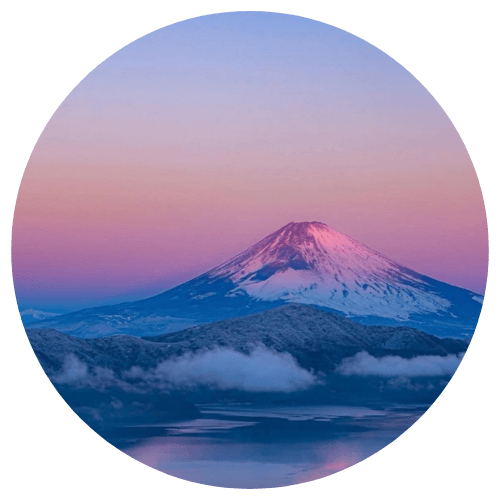
- …
- …
DON'T TAKE ME TO KYOTO
The problem isn’t Kyoto — it’s everyone in Kyoto at once
🎎
Kyoto is still one of the most beautiful cities in the world. The trouble is, everyone knows it.
The temples are magnificent, the gardens precise, the geisha districts hypnotic. But the experience, for many, has become a kind of performance. You queue, you shuffle, you take the same photo of the same red gate and call it culture.
Yet the Kyoto people fall in love with isn’t gone. It’s just moved sideways, to towns where heritage didn’t need protecting, because it was never lost.
It’s in the canal reflections of Kurashiki, the slow rituals of Matsue, the quiet confidence of Kanazawa, and the morning rhythm of Takayama. These are places where beauty still exists in the unposted moments.
So if what you want is the feeling Kyoto used to give - calm, craftsmanship, attention to detail, start here.
Drift along Kurashiki’s willow-lined canal
in a hand-punted boat, then meet the denim dyers of Kojima, where “Japan Blue” is still mixed by hand
Join a tea ceremony in Matsue
where matcha is an art form, pairing it with handmade wagashi in tearooms that look out over a castle moat instead of a crowd
Trace gold leaf in Kanazawa’s artisan workshops
traditional craft meets modern design, and the elegance of restraint feels unmistakably Japanese
Spend an evening in Higashi Chaya geisha district
where music drifts from wooden teahouses and performance still happens by invitation, not for an audience
Stay in a machiya townhouse in Hida-Furukawa
a small town where carpenters still use the joinery methods of their ancestors, and local sake breweries scent the air with cedar
Stand tall in Ōmiya Bonsai Village
a century-old community of nurseries and Japan’s only public bonsai museum, where patience and precision turn trees into living art
Visit Takayama’s morning markets
at dawn, where the rhythm of exchange between farmers and locals feels unchanged
Stroll through Okayama’s Korakuen Garden
one of Japan’s “Three Great Gardens,” and see how seasonal design, plum blossom, iris, maple, shapes how beauty is understood
Spend a night in rural Nara Prefecture
in a temple inn or countryside ryokan, where evening bells echo across rice fields and hospitality is still personal, not polished
Admire living landscapes at the Adachi Museum of Art
Where meticulously raked gardens are framed like paintings, and every window feels like a brushstroke
Walk beneath the wisteria tunnels of Ashikaga Flower Park
Skip the cherry blossom crowds and come when the wisteria bloom instead. Longer, quieter, and in full cinematic colour.
Breathe in the quiet craft of incense in Awaji
Visit one of Japan’s oldest incense makers to learn how fragrance became an art of meditation, not adornment
If what you want is the feeling Kyoto once gave - calm, craft, and care, I can help you find it again.
Book a 30-minute consultation and let’s begin.
DON'T TAKE ME TO ENLIGHTENMENT
It’s easy to visit temples in Japan. Harder to let them visit you
📿
For many travellers, spirituality in Japan starts and ends with the temple trail. The photos are perfect — vermilion gates, incense smoke, calligraphy stamps in a notebook, but the experience can pass like scenery from a train window.
Real connection asks for more than a ticket.
It might look like a temple stay on Mount Kōya, waking before dawn to the sound of monks chanting in a cedar hall. Or joining the Omizutori Fire Festival in Nara, one of the country’s oldest Buddhist rituals, where roaring torches illuminate the faces of pilgrims below. It could be an hour of zazen meditation with a Zen monk in a moss-covered garden, or copying sutras by hand before being invited into the private grounds of Saihō-ji, the “Moss Temple” that only opens to those who complete the calligraphy.
These moments aren’t performative or public. They’re small, quiet, sometimes awkward, and that’s exactly what makes them real.
Japan’s spirituality isn’t something you observe. It’s something that gently observes you, when you finally stop moving.
Sleep among saints on Mount Koya
Stay in a shukubo temple inn beside Okunoin, Japan’s vast forest necropolis, where lanterns flicker through cedar trees said to shelter 200,000 souls
Dream in the Buddhist hell of Osorezan
Stay by the sulphur lake at “Mount Fear,” a remote volcano where monks pray for the souls of the dead and the air itself smells of rebirth
Unlock paradise beneath Zenkoji Temple
Descend into pitch darkness to touch the key to salvation, hidden beneath the altar of one of Japan’s oldest Buddhist temples
Wander the living carpet of Saihōji Moss Temple
Copy sutras by hand in a private ceremony before entering its velvet-green gardens, open only to those who’ve earned reflection through calligraphy
Sit zazen in Erinji’s mountain-garden retreat
Meditate with Rinzai monks in a quiet mountain temple, until your mind mirrors the stillness of raked gravel
Write a single wish for compassion beneath the Great Buddha of Atama
Under the gaze of Tadao Ando’s vast stone Buddha, a modern temple to reflection surrounded by lavender
Purify body and mind with misogi shinto ritual
Stand beneath a waterfall as icy torrents crash around you, awakening fierce inner Shinto strength
Cleanse your soul with fire on Mount Takao
Join Shingon monks at Yakuōin Temple walking barefoot across glowing embers in a centuries-old act of renewal
Stand before the Living Buddhas of Yamagata
Monks who sought enlightenment through self-mummification still sit in eternal meditation, a rare glimpse into devotion carried beyond life itself
If you’re ready to travel with intention, not just itinerary,
I can help you design your path.
Book a 30-minute consultation and let’s begin.
Subscribe to our newsletter
It’s for travellers who’ve done the checklist and are ready for the edit

About